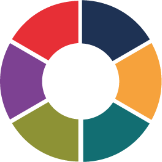Employee development is one of the most important investments that you can make in your organisation. Unfortunately, the trend we’ve witnessed over the pandemic is for personal and professional development budgets to be put on ice. Arguably, this is the time when training is more important than ever to maintain both performance and wellbeing. Leaders and teams need time, space and investment to adapt to the new world of work and the myriad challenges we’re currently facing, such as:
- Dealing with distributed teams and staying connected
- Dealing with uncertainty and adapting to change
- Developing personal and team resilience
- Understanding context and purpose
- Developing appropriate and effective communication methods
- Understanding employee wellbeing and promoting good balance
- Developing team norms and expectations
- Trust and empowering the team from a distance
Coupled with these challenges, organisations also face restricted budgets and leaders in ‘fire-fighting’ mode. Many organisations didn’t have effective ways of measuring team performance before Covid-19 hit, so they can only best-guess how teams are actually handling these changes. So, if budgets are limited and organisational priorities currently lie elsewhere, what should be considered in developing an effective training and development strategy?
Key Steps to an Effective Strategy
Training shouldn’t be a one-off or series of discrete activities, but a planned, measured and consistent investment in improving performance and wellbeing.
The place to start is with your people. Ask them what they need – run a simple ‘discovery meeting’ which focusses on gleaning subjective feedback from the team. Back this up with some empirical measurement. PCS is ideal because it poses survey questions that allow for both quantitative and qualitative feedback. Collate your findings and start to pin-point exactly where training and development interventions are most needed for that team.
You can also start to look at trends across the organisation. Are there obvious skills gaps that need to be addressed? Are there sections of the organisation that are thriving and are there opportunities to share knowledge and skills? If budgets are tight, then focus on the area of greatest need and the one that is going to get your teams back to productivity and health the quickest.
Next, consider the method of training. It doesn’t need to be expensive, but it does need to be done! Explore a range of options: one to one coaching, peer support or virtual team building events. The rapid adoption of online communications opens up a world of possibilities for virtual training. These can be e-learning or using virtual meeting platforms. Increasingly, coaches and trainers are creating effective facilitated learning spaces, which can be a cost-effective approach. When contracting external facilitators, make sure that there is fit and rapport with the organisation. Do trainers and coaches understand the business and its values? Have they done this type of work for your sector before?
Ensure that you are communicating the purpose and aim of any training and development programme with your people. Describe how training is about future preparedness, capacity building and resilience – not about seeking out problem people or addressing underperformance. To engage effectively with a training programme, people need to feel safe and supported.
Assess the impact of training. You’ve already surveyed your people to tailor interventions and now you need to remeasure to check that they’re working and make any tweaks or adjustments to the programme. Put in regular progress checks and make sure that you are communicating improvements, not just to the Board, but to the people participating. Everyone wants to know when things are going well and goals are being achieved!
Last but not least, develop a corporate mindset of continual improvement and seeking excellence. When the pandemic first hit, it was perfectly understandable that other priorities took over. But for every leader, now is the time to invest in medium and long-term development programmes which prepares the organisation to cope with potential future shocks and inevitable change.
In summary…
The need for development is needed now more than ever. It’s about managing and equipping people to deal with the current situation and preparing for future change. Designing an effective learning and development programme is about building readiness and capability to perform at our best, irrespective of the external environment. Accept the need for a discovery phase to understand first and look for ways to measure and benchmark performance and wellbeing. Use a mix of objective and subjective data to design training that is relevant and designed around need. Ensure any new programme is pitched the right way to the right audience. Build in constant reviews and evaluation of impact and don’t be afraid to adjust: the most effective training plans are often agile. And finally, keep it engaging, relatable and fun! People really do need a bit of that right now…


